Book Review: Combatants and Civilians in Revolutionary Ireland 1918-1923
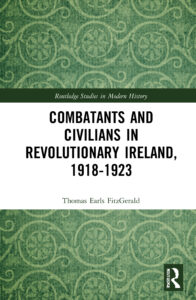 By Thomas Earls Fitzgerald
By Thomas Earls Fitzgerald
Published by Routledge, London 2021
ISBN 978-0-367-33352-2
Reviewer: John Dorney
Thomas Earls Fitzgerald’s book is a study of County Kerry, principally during the Irish War of Independence, 1919-21 and specifically, on how the guerrilla war there affected civilians. While there is a chapter on the subsequent Civil War of 1922-23 in the county, this is very much an epilogue to the main text on the ‘Tan War’ as Irish republicans termed the struggle against the British, which Earls Fitzgerald is most keen to dissect.
In particular, Earls Fitzgerald wants to grapple with the questions of violence against civilians by the various combatant forces – Irish Republican Army (IRA), Royal Irish Constabulary (RIC) and Auxiliaries and British Army and also how and whether civilians’ support sustained violence and how their political positions were shaped by it.
This book is a study of political violence and its effects in County Kerry, principally during the War of Independence 1919-21
The War of Independence in Kerry
There is certainly plenty of material to work with in Kerry, which contrary to some post-Civil War jibes by the likes of Eoin O’Duffy, saw very active IRA guerrilla units, particularly, the No. 1 and 2 Brigades in north and west Kerry respectively, and the slightly less active No. 3 Brigade in the south of the county.
Earls Fitzgerald notes that previous studies have concentrated on the squabbling within the local IRA there, that eventually necessitated IRA GHQ sending a Dublin officer, Andy Cooney to oversee the Kerry IRA units. However, his study shows that the impact of such bickering has been overblown. The IRA in Kerry was somewhat less successful in inflicting casualties on Crown forces than their counterparts across the county border in Cork, and in disrupting the workings of the Dublin Castle administration, but not that much.
Significant IRA actions, chronicled here, included the Headford ambush of March 1921 in which over twenty British Army troops were killed or wounded in an ambush of a train by No. 2 Brigade. Less easy to mythologise, but just as deadly, was an occasion, in May 1921 when eight RIC constables were killed in an ambush in Rathmore, having been lured there by the dumping of the body of an alleged informer.
Kerry also saw a number of landmark reprisals by Crown forces, notably the so-called ‘Siege of Tralee’ in November 1920, in which, in reprisal for the abduction (and secret killing) of two RIC constables, the police, including the newly recruited Black and Tans, imposed a curfew on the town of Tralee, burning homes and businesses and allowing no food in or out for over a week until public outcry in Britain forced a halt.
In addition, as Earls Fitzgerald ably shows, there were hundreds of acts of beatings, property destruction, intimidation, and all the other facets of insurgent and counter-insurgent violence that characterised the conflict up to the truce of July 1921.
A new chronology of the War of Independence
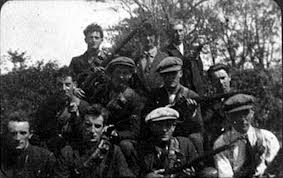
The strengths of this book lie in its empirical work, logging incidents of IRA and Crown forces’ violence numerically, by location and time, both against each other and against civilians.
In this manner, Fitzgerald posits a new chronology of the War of Independence. In this view the IRA at first established ascendance over the population, by the summer of 1920 not so much through lethal violence as through intimidation, boycott and its largely successful supplantation of the RIC as the keepers of law and order in the countryside, especially by enforcing the rulings of the Dail Courts.
Fitzgerald asserts that the IRA was involved in boycotts and intimidation but rarely killing up to mind 1920. It was Crown forces’ response that turned the conflict into a more lethal affair.
Petty criminals were punished, land disputes regulated and dissenters from the Republic -such as those who continued to deal with the RIC – punished, though not generally, at this stage, through killing. This was political violence, but more in the nature of the 19th century ‘Land War’ than what came afterwards.
It was Earls Fitzgerald writes, the counter-offensive of Crown forces from the late summer and autumn of 1920, spearheaded by the Black and Tans and Auxiliaries, that escalated the conflict into a type of genuine ‘war’. He notes that, contrary to some interpretations, in which British forces’ attacks on republicans, real and suspected and the population in general, were a response to an intolerable situation created by IRA attacks, ‘reprisals’ such as the burning of homes and creameries, and the beating and shooting of suspects, often took place in ‘quiet’ areas where there had been no prior IRA attacks.
This, he writes ‘activated rather than cowed the IRA’ and spurred them into much more ruthless and lethal attacks on Crown forces as well as, eventually, setting up dedicated ‘flying columns’ or fulltime guerrilla units.
Thirdly, there was final phase, from early 1921, up to the Truce, in which the British military took the lead on the Crown forces’ side over the police. Generally, this stopped the most indiscriminate police reprisals, but on the other hand, the Army was empowered to carry out ‘official reprisals’ such blowing up the houses of those suspected of helping the guerrillas. Thus, Earls Fitzgerald writes ‘no consistency emerges’ in Crown forces treatment of civilians.
There were also threats and some attacks carried out on republican activists and sympathisers by an organisation calling itself the ‘Black Hand’, which, as Fitzgerald writes, was ‘almost definitely’ composed of clandestine Crown forces rather than local loyalists as the groups threatening notices claimed.
Spies and informers
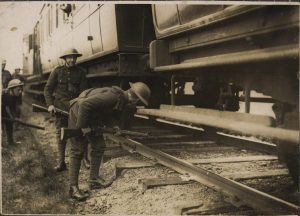
It was in this latter period also that the IRA around the country began to shoot and kill civilian informers in significant numbers. Earls Fitzgerald disputes the argument made by Brian Hughes in his book Defying the IRA that this new ruthlessness was a result of non-lethal measures of intimidation on the civilian population no longer working.
Rather he argues, correctly in this reviewer’s opinion, it was the result of the increased risks posed by informants to the IRA in this new deadly phase.
When captured guerrillas were, at best, interned indefinitely, often after a beating to extract information and at worst summarily executed by Crown forces, it became a matter of self-preservation to punish those who gave information and to terrify those contemplating it.
Fitzgerald does not find evidence that sectarian or communal strife was at the centre of events in Kerry in the period.
Earls Fitzgerald also deals sensibly with the issues raised by the late Peter Hart, who claimed, in his study of the IRA in Cork, that though the IRA claimed to be killing informers, they were in fact simply eliminating political and communal enemies, be they Protestants, ex-servicemen or others. Earls Fitzgerald shows that in Kerry at least, this is not sustainable.
Firstly, the Kerry Brigades killed only nine civilians (not all as informers), of whom none were Protestants, though six were ex-police or military. This compares to nearly seventy civilians executed by the IRA in neighbouring Cork, which as Earls Fitzgerald perceptively remarks, should be seen as an outlier, rather the norm, as it sometimes has been, when contemplating the IRA’s ruthlessness in 1921.
Moreover, Kerry’s small Protestant population was not generally targeted in IRA operations as a whole. This did however change somewhat with the splintering of the IRA in the period after the signing of the Anglo-Irish Treaty, in early 1922 up to the outbreak of the Civil War in late June of that year. It was in this period of vacuum of power in which most sectarian incidents, be they threats intimidation or land grabbing, and burglary occurred.
However, Fitzgerald disputes, again correctly in this reviewer’s opinion, that sectarian or ‘communal’ conflict was at the centre of events, certainly in the south of Ireland. Fighting for Irish independence did not involve, as Hart once put it ‘taking it out on the Protestants’ in any conscious or systematic way.
Another point to emerge is that overall levels of lethal violence against civilians were low in Kerry. Out of nearly 150 conflict related deaths in County Kerry up the Truce, only seventeen were non-combatants according to Earls Fitzgerald’s figures.
Areas for debate
With all that said, I do have some criticisms of and disagreements with, some of the arguments and interpretations presented in this book.
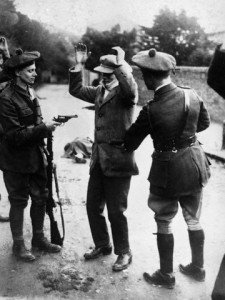
Firstly, with regard to republican ‘policing’ of the civil population, Earls Fitzgerald, perhaps in a swipe at those keen to trace social radicalism back to the War of Independence period, writes that the IRA were ‘imposing a conservative order’ on the mostly rural population of Kerry.
Land seizures were reversed, ‘tramps’ (the word then used for those now termed the Travelling Community) moved on from fairs, pub closing times and licensing laws enforced, he notes. Republicans were hostile to land agitation he states, going back to the Fenian era.
But this is an oversimplification of a complex phenomenon. The Fenians themselves were highly involved in agrarian disturbances in the 19th century, especially in places like Kerry, and it was the Volunteers or IRA who were at the forefront of land seizures and ‘cattle drives’ in 1918-1919.
At this point the national leadership grew alarmed lest the drive for independence be subsumed into what they termed ‘sectional strife’. The Dáil Courts and land arbitration courts were, as a result set up to calm such disturbances, but land redistribution remained a central part of the republican programme.
It is debatable whether, as argued here, the IRA ‘imposed a conservative order’ on the rural population.
Even the Free State government of 1923, widely portrayed as a conservative or even reactionary government, passed a Land Act in that year to compulsorily purchase the remaining great landed estates.
In short, the republican movement of 1919-21 contained within it both conservative and radical elements and to suggest that it was always in favour of the possessing classes and existing social norms is to tidy up a more variegated reality.
Secondly, the opening chapter of the book, which examines civilian support for the IRA relies rather too much on reminisces from sources such as Bureau of Military History and not enough on contemporary documents.
While it is interesting that different IRA accounts located their support among different social groups – some thought for instance they were stronger in the towns, some in the farming regions, others in the mountains, some noted the Irish speaking areas were ‘good’ others that the Gaeltacht areas were weak and deferential to landlords – this is not the same as empirical evidence and certainly not enough to state, as Earls Fitzgerald does, that the IRA ‘did not have much support’.
The issue of the extent of civilian support for the IRA needs further scrutiny, as does the reason for Crown forces’ extensive violence against civilians.
There may be other ways to quantify civilian support for the IRA in a locality; density of safe houses perhaps, subscriptions to the Dáil Loan or IRA arms funds in a given area perhaps, but they are not employed here.
Certainly, the IRA’s war did not have uniform support, as many of them acknowledged in hindsight, but it is simply impossible to run a sustained rural guerrilla campaign without the support of safehouses, civilians willing to keep their mouths shut and of course without willing new recruits from the local community.
Such an argument is also to ignore the political context, in which Sinn Féin swept the boards in Kerry in the elections of 1918 and 1920 and 1921. It is possible to argue, as Earls Fitzgerald does, that political support for independence and support for the use of force are not the same, but it seems obtuse also to argue that there was no overlap.
Thirdly, in accounting for the ferocity of Crown forces’ ‘reprisals’, Earls Fitzgerald makes one argument with which it is easy to agree, that they were in part driven by ‘thrill-seeking’, particularly among poorly disciplined police and Auxiliary units and that alcohol and simple theft also played a part.
However, he also argues that, rather than ‘situational factors’ (the intense stress of their situation and poorly disciplined new formations) as for instance Seán Gannon or David Leeson argue, or as a product of a government policy of repression as John Borgonovo has argued, it was the ideology and identity of the Black and Tans and Auxiliaries that was to blame. They were British imperialists, Earls Fitzgerald argues and feared revolution in the wake of the First World War.
In this respect, he argues, they were similar to the German Freikorps and Italian Fascisti, war veterans who became the stormtroopers of the counterrevolution after 1918. All that was missing in the British case, he argues for them to become ‘European-style White Guard’ was a charismatic leader like Hitler or Mussolini.
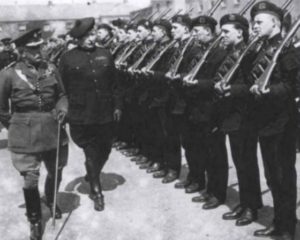
This seems like a misplaced analogy. Unlike the German paramilitaries or Italian squadristi, the Black and Tans and Auxiliaries were not volunteer corps with any particular ideology, but rather simply unemployed ex-servicemen drafted into the RIC for the pay.
Some of them may have held supremacist attitudes towards the Irish, so did many in the military, but this does not tell us why they embarked on such a season of reprisals in late 1920 when the regular Army by and large did not.
Moreover, it seems like something of stretch to claim that they posed a threat to the democratic order in Britain itself.
There are therefore, some points on which I would differ with Thomas Earls Fitzgerald, but this does not detract from the overall quality of the book.
If I have dwelt on my criticisms in this review, it is only a measure of how seriously a work with this depth of research and consideration should be treated. My disagreements are my own views and not reflective of any deficiencies in fact in the text.
This is well researched and provocative look at the War of Independence in Kerry and opens up many points for debate and further inquiry in the future.
See also the author’s response here.